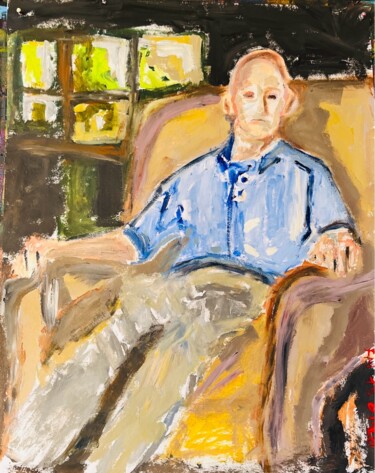
15.172 Pinturas originais à venda:
Como definir estilo Arte Outsider ?
Outsider Art paintings: what does it mean?
Outsider Art is an artistic movement inseparable from the name of the French artist Jean Dubuffet, art brut continues to enjoy a certain success in the world of contemporary art, as evidenced by the rich production of the artists of ArtMajeur.
Art brut, or outsider art, a term coined by the French artist Jean Dubuffet in 1945, designates this particular form of creative expression, mainly the work of self-taught artists, children, marginalized people or psychiatric patients, aiming to achieve a kind of consciousness of "difference".
In fact, the result of the production of this particular type of artists are very unusual and instinctive works, which, apart from particular styles or movements, are extremely raw and emotional.
In what context was Outsider art painting born?
Artists and critics of the 20th century were interested in "outsider" practices, which can be seen as part of a larger focus on rejecting established values in the modernist art world. Cubism, Dada, Constructivism, and Futurism were all art movements that started in the early part of the 20th century. All of these movements were a big change from the ways people lived in the past. Marcel Duchamp, a dadaist, for example, gave up "painterly" techniques to let chance play a role in the shape of his works or just to use "ready-made" objects in a new way as art.
Artists in the middle of the 20th century, like Pablo Picasso, looked outside of high culture for ideas. They were inspired by things like the artifacts of "primitive" societies, the art that children made without being taught, and vulgar advertising graphics. The fact that Dubuffet supported the art brut, which was made by the insane and other people on the edges of society, is another example of how avant-garde art challenges traditional cultural values.
Who is the “father” of Outsider Art paintings?
Dubuffet says that raw art must:
"(Arise from the material and) feed on the inscriptions and instinctive dispositions."
Here is what Jean Dubuffet says about it: Art Brut designates "works done by people who haven't been influenced by art culture, in which imitation plays little or no role, unlike in the work of intellectuals, so that everything (subjects, choice of materials, execution, means of translation, rhythm, ways of writing, etc.) comes from the authors' own experiences and not from the stereotypes of classical art or trendy art. People who like Art Brut say that it is different from folk art, naive art, and children's drawings.
And again, "Because of this, the work of amateurs is more valuable than that of professionals. Outsider art is the English word for Art Brut. The term was made up in 1972 by the English art critic Roger Cardinal.
While Dubuffet's term is very specific, the English term "Outsider Art" is often used in a broader way to include artists who are self-taught or naive and have never been in an art school. Most people who make what is called "Outsider Art" don't have much or any contact with the institutions of the traditional art world. Their work is often not found until after they have died. Many pieces of Art Brut or Outsider Art show extreme mental states, unusual ideas, or complex fantasy worlds.
The great sensitivity and the strong admiration that Dubuffet nurtured and manifested towards the "purity" of the art of the marginalized developed from fundamental encounters with the French master.In particular, Dubuffet's art brut was largely influenced in its main concepts by the work of two famous psychiatrists, namely Walter Morgenthaler and Hans Prinzhorn, who, fascinated by the artistic production of their patients, began to value it and to analyze, collect and document it.
Precisely, Dubuffet, who came into contact with these studies, was totally fascinated by them, to the point of believing that the art of the mentally ill could represent the purest form of artistic creation. Also, one book in particular, Prinzhorn's Bildnerei der Geisteskranken, in which thousands of works of art made by mentally ill people in various European institutions were analyzed, influenced his view of art.
It was after reading this work that Dubuffet began his personal collection, including not only art created by the mentally ill, but also the output of eccentrics, children, misfits, and outcasts. This collection, called "La Collection de l'Art Brut", was then donated by Jean Dubuffet to the city of Lausanne (Switzerland), where it is still being developed today. The works presented, in the context of permanent or temporary exhibitions, aim to encourage visitors to think about and understand these artists who are not really artists.
What are the most important works of Jean Dubuffet?
Even though Dubuffet painted, made wooden puppets, and made masks while working in his family's winery, most people consider his work after 1942 to be his best. From 1949 to 1960, he made many series of paintings. Paysage Grotesque, Assemblage, and Texturologie and Materiologes are some of the most well-known. Most of his paintings are made by putting together objects and natural materials to make paintings that look fun and three-dimensional.
During the 1960s, Dubuffet made paintings that look like puzzles, such as Nunc Stans and Bidon l'Esbroufe. In 1962, he made one of his most important cycles, L'Hourloupe, which was different in style from his earlier works but still used the ideas and references of Art Brut. He also made sculptures out of paper and Styrofoam and other unusual materials. During these years, he also worked on music and made many recordings with the Danish artist Asger Jorn. He also made some stage objects called "Practicables" during this time.
Between the 1960s and the 1980s, Dubuffet was the subject of many retrospectives. There is one at the Schloss Morsbroich museum in Leverkusen, one at the Musée des Arts Décoratifs in Paris, one at the Museum of Modern Art in New York, one at the Art Institute of Chicago, one at the Tate Gallery in London, and one at the Guggenheim Museum in New York.
In Venice, his works are at the Guggenheim and at Palazzo Grassi, where the series L'Hourloupe is on display. In the last years of his life, before he died in 1985, Dubuffet had retrospectives at the Akademie der Künste in Berlin and at the Guggenheim in New York.
What is the history of Outsider art painting?
"For me, madness is super sanity. Normal is psychotic. Normal means lack of imagination, lack of creativity."
The term "Outsider Art," coined in 1972 by British writer and art historian Roger Cardinal, essentially arose to be understood as the English-language equivalent of the older French word "Art Brut." In fact, going back in time, the word Art brut was invented by the painter Jean Dubuffet in 1945, pursuing the aim of bringing together under his name all those types of artistic production made by self-taught and/or psychiatric hospital patients, distinguished by a marked ability to operate by eschewing canonical aesthetic convictions. In this context, it emerges forcefully how Art brut, a movement aimed at giving voice to a previously unheard of art form, also represents an ideological trend, which favored the demolition of all sorts of creative discrimination. In fact, if previously artistic activity was always attributed to the upper echelon of society, that is, the educated and "sane," capable of reflecting the canons of beauty and form, with Art brut, flair became decidedly more inclusive. It was Dubuffet himself who took the lead in attempting to break down the pillars of traditional aesthetics, stating that art is an instinctive and primary need, made by ordinary men, who no longer need to be either "superior" or geniuses. But how did Dubuffet's idea to give voice to psychologically fragile people as well come about? The French artist was largely influenced by the work of two psychiatrists, namely Walter Morgenthaler and Hans Prinzhorn, who, having been fascinated by the artistic production of their patients, analyzed, collected and documented it. Dubuffet, having come into contact with these studies, was completely fascinated by them, so much so that he believed that the art of the mentally ill could represent the purest form of artistic creation.
Art brut company and some exponents:
In 1948, Dubuffet and other artists, including Jean Paulhan, André Breton, Charles Ratton, Michel Tapie, and Henri-Pierre Roche, started the Company of Art Brut. Artist Slavko Kopa was put in charge of the collection. The organization was meant to be a hub for more research and putting together exhibits. In 1949, the first Art Brut show was held at the Galerie René Drouin in Paris. It featured more than 200 pieces. In 1976, he opened the Collection de l'Art Brut to the public in Lausanne, Switzerland. Since then, places like La Maison Rouge and the Musée des arts décoratifs in Paris have put on shows of the work of artists who aren't well known.
Roger Cardinal, a professor emeritus of literary and visual studies at the University of Kent at Canterbury, came up with the term "Outsider Art" in 1972. He was trying to find a good English word for the French term "Art Brut." Cardinal explained Outsider Art in the same way that Dubuffet did: it is art made by self-taught people who don't follow traditional or academic art rules and who show "a strong sense of individuality." Both Dubuffet and Cardinal have said that Outsider Art and Art Brut are often associated with mentally ill artists, like schizophrenics.
However, the two terms also include the art of "people who are quite capable of managing their own social lives but who consciously or unconsciously recoil from the idea that art is necessarily a publicly defined activity with community-recognized standards," like children and social hermits. Adolf Wolfi is a well-known Art Brut artist who had a hard childhood, went to prison for two years, and was later diagnosed with schizophrenia. Alose Corbaz, Augustin Lesage, and Alfonso Ossorio are also good examples. Even though they have different styles, their paintings, drawings, and sculptures all have free shapes, lots of color, and a childlike quality that shows they haven't had much formal education, which is what Art Brut means.
What is the Collection of Art Brut?
In Lausanne, Switzerland, there is a museum called the Collection de l'Art Brut. It keeps works by self-taught artists who, for different reasons, mostly lived alone and had little contact with other people and other cultures. The first collection was put together by Jean Dubuffet, an artist, theorist, and supporter of Art Brut, starting in 1945. He gave the collection to the city of Lausanne in 1971.
The collection is made up of sculptures, composite objects, tapestries, assembled and embroidered textiles, drawings, and paintings made from different materials, sometimes salvaged materials or materials with a different use than the artistic one. They were all made by people with a lot of imagination and no cultural or social conditioning, since the artists who made them did not have academic training and were not experts on the subject. The authors of these works didn't want to be famous or make a lot of money. Instead, they wanted to achieve personal and intimate satisfaction. Dubuffet's research began in Switzerland after World War II, and in 1947, he showed his first collection at the René Drouin Gallery in Paris. In 1962, Dubuffet set up a study center for this kind of art and put out a magazine called Cahiers de l'Art Brut, which only had eight issues. Dubuffet's thinking is based on the fact that these works are not made possible by a pathological condition.
There are many cases of mentally ill artists, but the one thing they all have in common, whether they say it or not, is that they don't want academic or cultural interference. Not being sick is not a requirement for talent, but being alone may have pushed someone to use their creativity. In 1967, Dubuffet showed off a lot of his collection (700 pieces by 65 artists) at an Art Brut show at the Museum of Decorative Arts in Paris.
In 1971, he gave the whole collection to the city of Lausanne on the condition that the city build a museum just for these kinds of art. At the time that the collection was given to the city, it had about 1,200 works by about 100 different authors. The collection was opened to the public in 1976. Its first director, Michel Thevoz, oversaw and promoted the works for about 25 years, both in the museum and in foreign museums, through temporary exhibitions. Since 2001, Lucienne Peiry has been in charge. Over the years, the collection has grown through purchases and donations. It now has about 70,000 works by more than 400 authors, of which 700 are on display in the permanent exhibition.
In addition to the permanent exhibit, the museum puts on temporary exhibitions based on a theme or a single author. The whole collection is being digitized right now. The collection of the museum is kept in the west wing of Beaulieu Castle, which is an 18th-century mansion owned by the city. The wide facade is 48 meters long and is made up of three units that are all connected to each other. Architects Bernard Vouga and Jean de Martini fixed it up so it could hold the Collection de l'Art Brut. This was in 1974.
What is the relationship with Outsider painting and mental illness?
Wassily Kandinsky, August Macke, Franz Marc, Alexej von Jawlensky, and others in the "Der Blaue Reiter" group were the first to show interest in the art of the mentally ill, as well as the art of children and people who made "peasant art." The artists saw in these groups' work an expressive power that came from what they saw as a lack of sophistication. This was shown in the first and only issue of their magazine, Der Blaue Reiter Almanac, which came out in 1912. During World War I, Macke was killed at Champagne in 1914 and Marc was killed at Verdun in 1916. Paul Klee helped to fill some of the void left by these deaths by continuing to get ideas from these "primitives."
In the 1920s, there was still a growing interest in the art made by people in insane asylums. In 1921, Adolf Wolfli, a psychotic mental patient in Dr. Walter Morgenthaler's care, was the subject of the book Ein Geisteskranker als Künstler (A Psychiatric Patient as an Artist), which was written by Dr. Morgenthaler. Wolfli started drawing on his own, and this seemed to calm him down. His best work was an illustrated 45-volume epic in which he told the story of his own made-up life. It is a huge book with 25,000 pages, 1,600 illustrations, and 1,500 collages. Wolfli also made a lot of smaller pieces, some of which he sold or gave away as gifts. His work is shown at the Adolf Wolfli Foundation in the Bern Museum of Fine Art.
Hans Prinzhorn's book Art of the Mentally Ill (Bildnerei der Geisteskranken) came out in 1922. It was a turning point. This was the first formal study of psychiatric works. It was based on a collection of thousands of examples from European institutions. At the time, avant-garde artists like Paul Klee, Max Ernst, and Jean Dubuffet were very interested in the book and the art collection.
People with some formal art training and well-known artists can both have mental illness and be put in a mental health facility. For example, as a young man, William Kurelek went to the Maudsley Psychiatric Hospital to get help for his schizophrenia. He was later given the Order of Canada for his artistic work throughout his life. He painted in the hospital and made The Maze, a dark picture of his troubled childhood. From November 1953 to January 1955, he moved from the Maudsley to the Netherne Hospital to work with Edward Adamson, who created the Adamson Collection and was one of the first people to use art therapy. Adamson died in 1996.
What are the techniques of Outsider painting?
First, outsider artists don't have any formal training. This means they haven't gone to art school or been taught art in an academic setting. A lot of these artists don't know about the art in museums or galleries. Their work is not what most people think of as fine art. Outsider artists only make art for themselves, to make sense of their experiences, interests, and the world around them. Outsider artists interact with their surroundings on their own terms and don't follow the rules of the art world.
Second, outsider art is made for the artist's own pleasure and not always for an audience. When we think of an artist, we might think of someone who paints or makes sculptures to sell. There's nothing wrong with this; most artists do this to make a living. Many outsider artists, on the other hand, don't make art with the goal of selling it. Most of the time, they don't care what other people think of their work.
Third, outsider artists often have different reasons for making their art than mainstream artists do. Outsider artists make art for themselves, documenting their own lives and important events in history. Visionary artists are often people who don't come from the art world. Some people make art because they think God or another spiritual or intelligent source has told them something. These artists are driven to make their art because they have a strong inner vision. Often, an impulse, an obsession, or a religious belief is what drives an artist.
Fourth, unlike many mainstream artists, outsider artists make art with unusual materials and things they find. When you go to a museum, you'll see hundreds of paintings on the walls that were painted with oil or acrylic paint on a standard canvas. But outsider artists often use non-traditional or repurposed materials, especially when they don't have access to art supplies. Outsider artists often use things from their house, yard, and neighborhood as their art supplies. They use things that have been used before or things that most of us would throw away. A common trait of outsider art is the use of non-traditional or easy-to-find materials.
Outsider paintings: critical point of view
"True art is where no one expects it, where no one thinks about it or utters its name. Art is above all vision, and vision, many times, has nothing in common with intelligence nor with the logic of ideas".
Jean Dubuffet's iconic words are perfect to introduce to the concept of Art brut, an artistic movement also referred to as Outsider art, which, in recent years, has found enormous success within art events, fairs and auctions, thus becoming part of important collections scattered a bit all over the world.
Unfortunately, however, it is not always easy to be able to classify this type of creative production, as it is often, and somewhat reductively, juxtaposed with Naïf Art, folk art or the work of simply self-taught artists. In addition, the contemporary world tends to relegate the aforementioned movement to a kind of "limbo," in which are included all those modes of expression, which are outside the more "mainstream" creative forms.
Although this is a great misunderstanding, it is true that outsider works tend to transcend from other genres, as they are marked by rather eccentric visions, aimed at challenging the more traditional perception of art. Justifying this cliché is the fact that Outsider art initially emerged from the study of the works of psychiatric patients, who were capable of creating extremely pure and naive forms, the result of sincere, instinctive and unbiased intuition.
However, it is not psychosis that determines membership in the movement, for it, assuming there is one, must be combined with a self-taught training, capable of departing from the canonical standards and classifications of the artistic world. In addition, it is necessary for the will to create to eschew the desire for visibility and the desire to adhere to public taste or dominant aesthetic trends. Indeed, art brut artists must create by simply giving vent to their innermost emotions, without imagining that their work can be shared with others and, consequently, standardized.
The term "outsider art" is controversial in and of itself. Some artists, art critics, and advocates say that calling artists "outsiders" contributes to this othering and that we should use more neutral terms like "self-taught art" instead. These words, they say, have less of a negative connotation because they don't focus on the artists' marginalization. Some people who fight for the rights of people with disabilities put art made by people with mental illnesses or intellectual disabilities in a separate category called "disability arts" instead of "outsider art." Others don't see why outsider art should be its own category because they think that the "outsider" label keeps people from seeing self-taught artists as legitimate.
Still, some art critics and gallery owners support outsider art as a separate genre. They do this because they think it gives people who might not be taken seriously for their creativity another chance to be recognized for it. Outsider art and art brut galleries and centers can show how to show and promote this unique type of art in a respectful way if they do it the right way.
The Art Brut Center Austria's Gugging was once a mental hospital where patients were encouraged to draw as a form of therapy. Many of the works there were considered classic examples of art brut by Dubuffet, and over time the hospital developed into an arts center with a gallery and studio. As part of this change, the Center started to focus more on the artists' creativity and less on their mental illnesses. Over time, the people who took part in their art therapy program stopped being called "patients" and started being called "artists."
Arts Project Australia, an art studio that displays works by those with intellectual disabilities, is also aware of this controversy. To protect against exploitation, artists whose works are displayed there are payed according to National Association for the Visual Arts guidelines, and their art is emphasized rather than their disabilities.
Curators at other places, like art museums that don't only show outsider art, say that it's important to be careful not to "pathologize the artist" when showing outsider art. This is done both to respect the artists' privacy (especially if they are still alive) and to let the art stand on its own artistic merits.
In some ways, this nuanced way of looking at outsider art is in line with how the art brut movement started out. When it came to the works that first inspired Dubuffet, the focus was on the artists' diagnoses, but the respect for their art was genuine. Psychiatrists encouraged their patients to draw as a form of therapy, and the mainstream artists who were first drawn to the works did so because they thought they were unique and real.
Outsider art is made by artists who come from a wide range of backgrounds. When it comes to people on the outside of society because of a mental illness or disability, it's important that their art is respected. Some art critics, people who fight for people with disabilities, and curators who support this kind of art have taken steps that give us not only a way to work with "outsider" artists but also a way to treat all people who are considered "outsiders."
Terminology of Outsider art painting
There are a number of ways to talk about art that is "outside" of official culture. The meanings of these words vary, and some of them overlap. The editors of Raw Vision, a leading journal in the field, say, "Whatever views we have about the value of controversy itself, it is important to keep creative discussion going by using the same words." So, they don't like how the term "outsider artist" is used to describe almost any untrained artist.
"Not being trained, clumsy, or naive is not enough. Art Brut and Outsider Art are almost the same thing in spirit and meaning. They both refer to rare art made by people who don't know what it's called."
Art Brut is French for "raw art," which means that it hasn't been through the "cooking" process of art schools, galleries, and museums. Art was first made by people who were psychotic and lived almost completely outside of culture and society. To be exact, it only refers to the Collection de l'art brut.
Folk art was first thought of as crafts and decorative skills done by peasant communities in Europe, but it could probably be used to describe any native culture. It has grown to include anything that is both useful and beautiful, like chain-saw animals and buildings made out of hubcaps. The main difference between folk art and outsider art is that folk art usually uses traditional forms and social values, while outsider art is on the fringes of society.
Intuitive art/visionary art: Vision Magazine's favorite words for outsider art. It says that they were chosen to be umbrella terms. Visionary art, on the other hand, is different from the other definitions in that it can often be described by what it is about. For example, it might show spiritual or religious images. Most likely, the most general term is "intuitive art." Intuitive: The Center for Intuitive and Outsider Art in Chicago runs a museum where intuitive and outsider art is studied and shown. Visionary art is the focus of the American Visionary Art Museum in Baltimore, Maryland. The museum collects and shows visionary art.
Marginal art is basically the same as Neuve Invention; it refers to artists who are on the outside of the art world. Naive art is another term that is often used to describe untrained artists who want to be "normal" artists. This means that they interact with the mainstream art world much more consciously than outsider artists do.
A new term for artists who are on the fringe but still have some contact with mainstream culture. They might do art on the side, for example. The phrase was also made up by Dubuffet, but it only refers to a certain part of the Collection de l'art brut.
Visionary environments are buildings and sculpture parks made by visionary artists. They can be as small as a decorated house or as big as a large area with a lot of sculptures that all fit together well. Watts Towers by Simon Rodia, Buddha Park and Sala Keoku by Bunleua Sulilat, and The Palais Ideal by Ferdinand Cheval are all works in this category.
What are the most common techniques of the Outsider Art paintings?
In reality, there are no representative techniques of outsider art, because each artist in the movement tends to express their inner self autonomously, following their most natural, simple, direct and instinctive tendency. Indeed, works can be created on a wide variety of mediums, such as paper, cardboard, cardboard, wall, canvas, copper and glass.
However, certain recurring stylistic characteristics are frequently found in the work of this type of artist, such as the motifs and particular design methods, which are very obsessive and repetitive. Probably, these ways of approaching art reveal both a deep sensitivity to the passage of time and a desire to generate a kind of order in an often problematic and chaotic interiority.
As for the materials used, they are, like their creators, often unconventional, as if they wanted to connect more to the rich inner world of their creator.
Who are the Outsider art’s popular painters, artists and illustrators of the past and the present?
Jean Dubuffet (1901 – 1985)
Jean Dubuffet, a famous French painter and sculptor, is considered the founder of the Art Brut artistic movement. After attending the Academy of Fine Arts in Le Havre, his hometown, for two years, he went to Paris in 1918 to take courses at the Académie Julian, an institution he would not leave until six months later. During this formative period, Hans Prinzhorn's book on the art of the insane and the artistic production of primitive peoples exerted a strong influence on him. However, his decision to become a painter did not become final until 1942, during which time he was largely influenced by the expressionist master Paul Klee. But it was from 1945 that his true path began, a period during which Dubuffet theorized and introduced the concept of art brut. Always in tune with this artistic current, he founded in 1947, with André Breton, Paulhan and Drouin, the "Compagnie de l'art brut". It is precisely in these last projects that the thought of Dubuffet appeared with force: to free oneself from the artistic tradition to seek an original creativity capable of tracing a new path for art.
Adolf Wölfli (1864 – 1930)
Adolf Wölfli, Swiss painter and main representative of Art Brut, was largely marked by the unpleasant events of his childhood, shattered indelibly by the presence of a violent father and the premature death of his mother. These unpleasant events, added to the ill-treatment that the young man suffered during his work in the camps, led the boy to present serious behavioral problems, so much so that he was first imprisoned, then, once his proven schizophrenic state, interned in the Waldau asylum (Switzerland), where he will remain until the end of his days. It was in the psychiatric hospital that the artist consoled himself by drawing, gradually becoming aware of his talent, which would be strongly encouraged and valued by the psychiatrist Walter Morgenthaler. Finally, it is worth highlighting how the artist has produced, during his thirty years of activity, 1,300 drawings, several notebooks of writings and a gigantic biography of no less than 25,000 copies (The legend of Saint Adolf) , works that are mainly in the Museum of Fine Arts in Bern.
Henry Darger (1892 – 1973)
Henry Darger, American writer and illustrator, is best known for his fantastical manuscript, which, titled The Realms of Unreal, is lavishly illustrated with some of the best examples of Outsider art done in watercolor. Regarding the life of the artist, Darger, after losing his mother at the age of four, lived with his caring father until the latter, aged and disabled, was taken to a retirement home. After this episode, he first ended up in a Catholic asylum for young people, then was transferred to a mental asylum, because he was declared mentally ill. The suffering of this confinement has been largely sublimated in the literary work Les filles de Vivian. In 1908, Darger manages to escape from the psychiatric hospital, but the taste of his freedom is marked by a strong existential monotony.
Howard Finster (1916–2001)
Howard Finster, American Baptist artist and minister, claimed to have been inspired by God to spread the gospel through his artistic creation, including outsider, naïve, and visionary artwork. Finster's artistic research became known to the general public in the 1980s, when he designed the album covers of the famous American groups REM and Talking Heads. As far as the artist's private life is concerned, Finster, who was born in Alabama and grew up on his large family's farm, had his first vision at the age of thirteen, an extremely illuminating episode that led to his dedication to preaching. As for his artistic career, he devoted himself to the construction of museums intended to collect and exhibit the specimens of what humanity has created, such as the Plant Farm Museum, as well as the production of sacred art, portraits and pop culture icons.
Aloïse Corbaz (1886 – 1964)
She was a well-known Art Brut artist, and Jean Dubuffet put one of her pieces in his early collection of psychiatric art. She wanted to be a singer, but instead she worked as a teacher and governess at the German court of Kaiser Wilhelm II. While she was there, she became obsessed with the Kaiser. This led to a diagnosis of schizophrenia, which led to her being sent to a mental hospital in 1918. Around 1920, she started painting and writing poetry in secret, but most of her early work has been destroyed. In 1936, the director of the hospital, Hans Steck, and the general practitioner, Jacqueline Porret-Forel, became interested. In 1947, Dubuffet found her work. He also thought that Alose was cured when she stopped fighting her illness and instead chose to grow and use it. His work is sexual, and most of it shows beautiful women with full figures and long hair being cared for by men in military uniforms. He filled up whole sheets with the bright colors of pastels, pencils, and flower juice. Like Adolf Wolfli, he feels compelled to fill every empty space on the sheet. This is called a "horror vacui."
Gaston Chaissac (1910–1964)
Gaston Chaissac was a French painter who lived from 1910 to 1964. Son of the French rural working class and a self-taught person, he got involved in the art world when Otto Freundlich and Jeanne Kosnick-Kloss moved in next door to him in Paris in the 1930s. They showed him modern art and helped him paint, putting his work out there and encouraging him. Gaston Chaissac's work is often thought of as "Art Brut" or "Outsider Art." His style has been called "modern rustic" by some artists. Jean Dubuffet liked Chaissac's art when he saw it for the first time in 1946. He also wrote to well-known French artists and writers like Albert Gleizes and Raymond Queneau for a while. Gaston Chaissac's writing was always a part of his work, and he always signed it. His signature changed from being a signature to being a separate part of a sign's composition. He still uses titles that are influenced by poetry and a very large vocabulary.
Bill Traylor (1853 – 1949)
William Traylor was an African-American artist from Lowndes County, Alabama, who taught himself to paint. He was born around April 1, 1853, and died on October 23, 1949. Traylor was born into slavery and worked as a sharecropper for most of his life after he got his freedom. Traylor didn't start drawing until after he moved to Montgomery, Alabama, in 1939. At the age of 85, he got a pencil and a piece of cardboard and started writing down his memories and thoughts. From 1939 to 1942, he made almost 1,500 works of art while working on the streets of Montgomery. Traylor's work was first shown to the public in 1940, but it wasn't until the late 1970s, 30 years after he died, that it started to get more attention. Charles Shannon and the changing tastes of the art world have made it possible for people to see Traylor as an important figure in American folk and modern art. Shannon saw Traylor's work for the first time in 1940. He brought Traylor to the attention of the rest of the art world. Traylor is now one of the most important artists in the "self-taught" and modern art fields.
Scottie Wilson (1891 – 1972)
Scottie Wilson was born Louis Freeman on February 28, 1891, but his birth certificate says his name was Lewis. He was an outsider artist from Scotland who was Jewish and best known for his very detailed style. At the age of 44, he started making art. Artists like Jean Dubuffet and Pablo Picasso liked and bought his work, and it is generally agreed that he was at the forefront of outsider art in the 20th century. His style didn't change much at all, and because he didn't date most of his works, it's hard to figure out when they were made without the few written records that do exist. He mostly used a small number of visual elements, like plants, birds, animals, clowns (self-portraits), and "Greedies" and "Evils" (malignant personifications). The small changes and progressions in his subject matter and style can be used to put his work in a purely speculative order of time. People think that his earlier works were more organic and had less precise cross-hatching and detail. Some images were used more often while others were used less often, and it is thought that the level of detail got better over time. As he said once: When I'm at work, I can see what's going on and guess what will happen next. I can see best when I use a pen to finish my drawings. When I'm making strokes—hundreds and thousands of them.
Guo Fengyi (1942)
Guo Fengyi is a self-taught Chinese artist who makes works on paper with brushstrokes that are carefully controlled and weave together to make beautiful pictures. She used to work in a rubber factory, but she had to quit at age 39 because her arthritis was so bad. She found a spiritual path in Qi Gong, and then she started having visions that helped her draw. She didn't start out with a plan, but as she worked, her ideas led her to make big works on rice paper. After her art was found in recent years, her paintings of ghosts, dragons, phoenixes, and other fantastical creatures started to get a lot of attention.
Jeroen Pomp (1985)
Jeroen Pomp is a Dutch painter who draws plants and animals on large sheets of paper. He paints cityscapes of Rotterdam that have animals, upside-down roads, and pastel-colored cars. He calls himself "an encyclopedia of animals." He has autism and seizures, and after living in a group home for people with mental disabilities for a few years, his life now revolves around painting at Herenplaats. Gert van't Gof made a documentary film about Pomp, which led to him showing his work at the Outsider Art Fairs.
Harald Stoffers (1961)
Harald Stoffers is an Outsider Artist whose works are a mix of writing, music scores, and pictures. At the age of 22, this German artist was sent to a mental hospital, where he began writing words on small pieces of paper. These short sentences became longer letters that he wrote to his mother. He would often tear up his messages, making them look like pieces of a puzzle. After he started showing his work, people outside of the Outsider Art world became interested in it.
Mitsuo Yumoto (1978)
Mitsuo Yumoto is a Japanese artist who draws with colored pencils. He is inspired by everyday things like buildings, ships, bugs, and birds. These colorful patterns are made up of many small pieces that fill the whole picture. The surface is covered with colors and shapes that are different from each other. These colors and shapes make dreamlike shapes that look out of this world and more fantastic than anything found in nature. He has shown his work often in both Japan and New York.
Tomoyuki Shinki (1982)
Tomoyuki Shinki is an artist from Osaka who loves fighting sports like judo, boxing, wrestling, and Muay Thai. His black-and-white and bright-colored drawings show two opponents and how their muscles move. By using his computer to distort these subjects, he made them look like cartoons with twisted athletes. Inspired by real matches, he makes figures with a lot of space around them by putting bold, black lines next to bright colors.
Gregory Blackstock (1946)
Gregory Blackstock is a genius with autism. For more than 25 years, he has washed pots at the Washington Athletic Club in Seattle. He was obsessed with both man-made things and all kinds of living things. When he retired in 1986, he started making obsessive, detailed drawings that brought together all of these different interests. People have called him a "anthropologist of the daily." With a pencil, a black marker, some crayons, and a lot of attention to detail, he made amazing visual lists of everything from hats to different kinds of owls.
Michael Patterson-Carver (1958)
Michael Patterson-Carver was born in Chicago in 1958. He grew up during the 1960s protest movement, which has been a big source of inspiration for him ever since. This artist learned to draw on his own, and he uses bright colors to show social injustices, left-wing causes, and past civil rights struggles. Since he thinks of himself as a political refugee, his art is a way for him to stay out of politics. He has shown his work all over the world, and in 2008, he won the Altoids Award and had a show at the New Museum in New York.
Winfred Rembert (1945 – 2021)
Winfred Rembert is an African-American artist who works on leather canvases with tools and paint. As a child and young adult, he picked cotton and peanuts in Georgia, where he grew up. During a civil rights march in the 1960s, he was put in jail. He started making art in prison, where he learned how to make leather with designs on it. Remberd sees scenes from the Southern town where he was born and his memories of oppression and racial tensions when he stretches, stains, and cuts leather.
What about contemporary art?
Outsider art is a small and almost closed-off part of the creative world. Outsider Artists don't have any formal art training, so they work on the edges of contemporary art and outside of art institutions. They make works of free-flowing expression that don't follow any rules or taboos, which gives us a good look at how they see the world.
Roger Cardinal used the term "Outsider art" for the first time to describe the work of untrained artists who made art outside of the mainstream art world. Over the next forty years, the definition of "Outsider art" grew to include artists with disabilities, mental illness, homelessness, ethnic minorities, migrants, folk artists, and the self-taught.
Outsider art is a place where rules are made up, original ideas come up, and taboos are broken. This gives us a look at the world through the eyes of other, sometimes strange, people.
Art Brut has been a huge success at events, art fairs and art auctions, being part of important collections around the world. Unfortunately, it is not always easy to classify this type of creative production, since it is often, and rather reductively, equated with naïve art, popular art or the work of simply self-taught artists.
Moreover, the contemporary world tends to relegate the aforementioned movement to a kind of "limbo", in which are included all the modes of expression that lie outside the more "classical" creative forms.Although this is a big misunderstanding, it is true that outsider works tend to transcend other genres, as they are characterized by rather eccentric visions, aimed at challenging the more traditional perception of art.
These contradictions are perhaps the source of the very fascination of the movement, represented in the reality of our time by artists such as Guo Fengyi, John Byam, Tomoyuki Shinki, Judith Scott, William Edmondson, Bill Traylor, Martín Ramírez and many more...
In recent years, both collectors and curators have become more interested in Outsider Art, and many pieces have been sold at auction and shown at international shows. Outsider art is liked by everyone because it comes from a raw, democratic place. Not only does the work belong to more than one genre, but it also shows a lot about the artist and the time in which he or she lived.
Você está procurando por Pinturas originais à venda ?
Explore todos os estilos e todas as técnicas de pintura: pinturas contemporâneas, arte de rua, arte abstrata, arte figurativa, paisagens, retratos, naturezas mortas, nus, aquarela, pintura a óleo, pintura acrílica ... ArtMajeur é para todos as sensibilidades artísticas e celebra a beleza ao seu lado por 20 anos com mais de 3.6 milhões de obras de arte contemporânea para descobrir ... ou adquirir! A referência mundial em pinturas contemporâneas. Descubra obras de artistas contemporâneos de todo o mundo para decorar seu interior com classe! Amante da arte simples ou colecionador confirmado? Encontre a tela ou pintura favorita que realmente realce sua decoração. ArtMajeur oferece obras originais, edições limitadas e impressões de arte dos melhores artistas contemporâneos do mundo. Na ArtMajeur, as pinturas são selecionadas por entusiastas e especialistas do mercado de arte. Selecionamos para você as obras originais de pintores da moda, premiados e reconhecidos, bem como novos valores em ascensão no campo da arte contemporânea para orientá-lo e ajudá-lo em seu processo de compra de pinturas online.
Descubra Pinturas de Arte Outsider contemporânea na ArtMajeur
Pinturas contemporâneas de Arte Outsider são uma forma única de obra de arte original criada por artistas que não têm formação formal no mundo da arte tradicional. Esses artistas geralmente trabalham com uma variedade de suportes e materiais, incluindo objetos encontrados, telas não convencionais e mídias mistas. O uso desses materiais permite uma ampla gama de texturas e dimensões, o que torna cada obra de arte verdadeiramente única. O que diferencia o Arte Outsider de outras formas de arte é a emoção crua e autenticidade que é visível em cada peça.
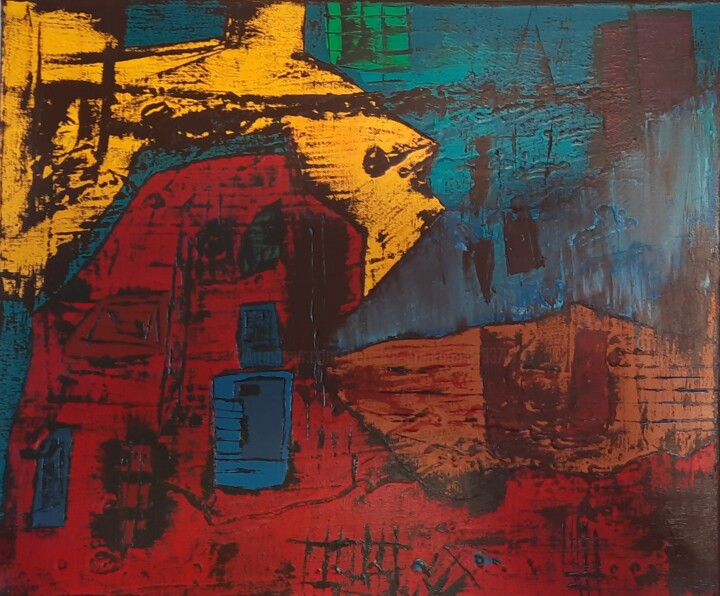
©2024 Florence Grammond
Origens e História
Pinturas de Arte Outsider Contemporâneo, também conhecido como Art Brut ou Arte Bruta, surgiram como um movimento distintivo no início do século XX. O termo foi cunhado em 1945 pelo artista francês Jean Dubuffet, que se inspirou no trabalho de pacientes psiquiátricos e outros artistas marginalizados. O Outsider Art é caracterizado pelo seu estilo cru, não treinado e muitas vezes não convencional, que desafia as noções tradicionais de técnica e estética artística. O movimento evoluiu ao longo do tempo, com vários subgêneros e estilos emergindo, como arte popular, arte visionária e grafite. Apesar de inicialmente ser considerado pelo mundo da arte como amador e pouco sofisticado, o Outsider Art ganhou crescente reconhecimento e apreciação nos últimos anos por sua expressão única e autêntica da experiência humana. Hoje, o Outsider Art é celebrado como uma parte vital e dinâmica do mundo da arte contemporânea.
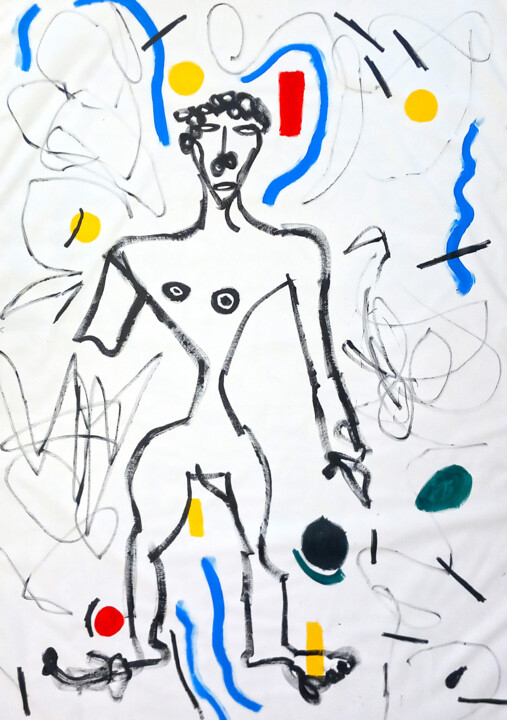
©2025 0xec6d0
Evoluções dessas Obras no mercado de arte contemporânea
A natureza única e não convencional das Pinturas de Arte Outsider tem contribuído para sua crescente importância no mercado de arte contemporânea.
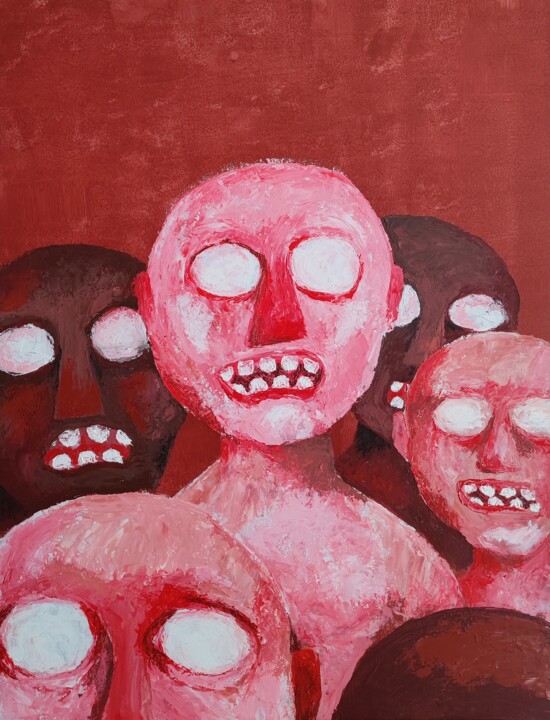
©2025 Alexandre Canova
Artistas Famosos Relacionados
Os Artistas Contemporâneos famosos por suas criações em Pinturas de Arte Outsider contemporâneas são numerosos. Um deles é Henry Darger, cujas obras foram descobertas após sua morte em 1973. Suas pinturas e escritos retratam um mundo imaginário de meninas jovens que estão em guerra com adultos malvados. Outro artista é Bill Traylor, um afro-americano que começou a pintar aos 80 anos e cujas obras retratam a vida cotidiana no sul rural. Jean-Michel Basquiat, que ganhou fama nos anos 80, também é reconhecido por suas pinturas em estilo de grafite que abordam raça, identidade e política. Outra artista notável é Judith Scott, que usa objetos encontrados para criar formas esculturais coloridas e intrincadas. Ela nasceu com síndrome de Down e é celebrada por sua capacidade de se comunicar por meio de sua arte. Por último, James Castle, que nasceu surdo e nunca aprendeu a ler ou escrever, criou desenhos, livros e colagens usando materiais caseiros. Suas obras são frequentemente descritas como minimalistas e poéticas. As obras desses artistas contribuíram para a evolução da Arte Outsider e continuam a inspirar artistas contemporâneos hoje.
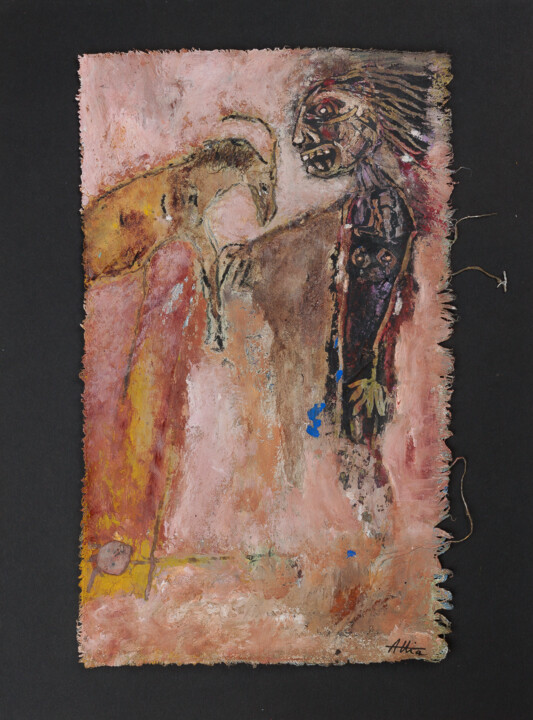
©2022 Véronique Attia
Pinturas Notáveis de Arte Outsider Contemporânea
Arte Outsider, também conhecida como Art Brut ou Arte Bruta, refere-se às obras de artistas que são autodidatas e não possuem treinamento formal em arte. Esses artistas criam obras que são frequentemente caracterizadas por sua emoção crua e perspectiva única do mundo. Aqui estão algumas das pinturas contemporâneas de Arte Outsider bem conhecidas:


Mickael Bereriche (KESMO)
Pigmentos em Tela | 35,4x27,6 in
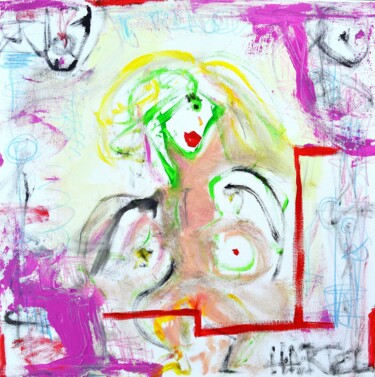
Paul Hartel
Acrílico em Tela | 24x24 in
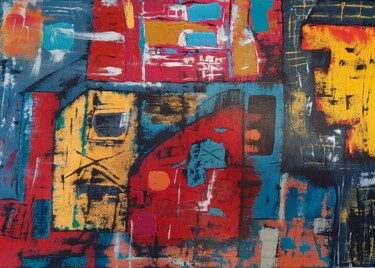
Florence Grammond
Óleo em Tela | 19,7x27,6 in
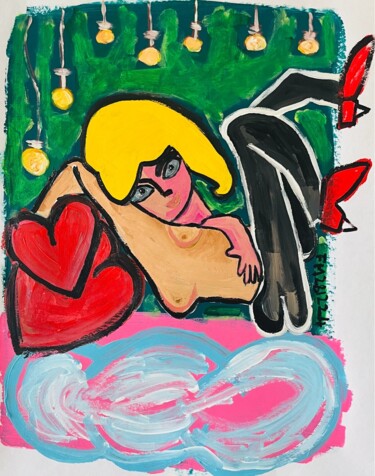
Frédérick Meunier
Acrílico em Papel | 23,6x18,9 in
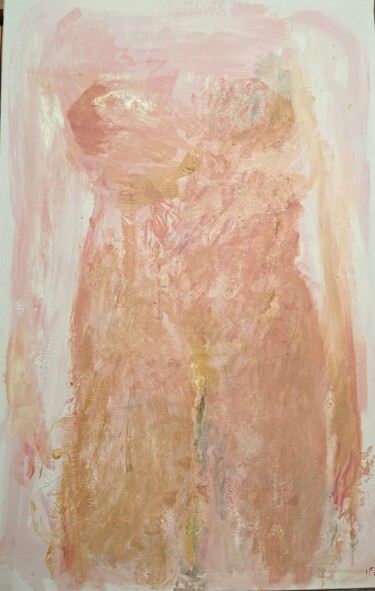
Isabelle Fauquez
Óleo em Tela de linho | 39,4x25,6 in




